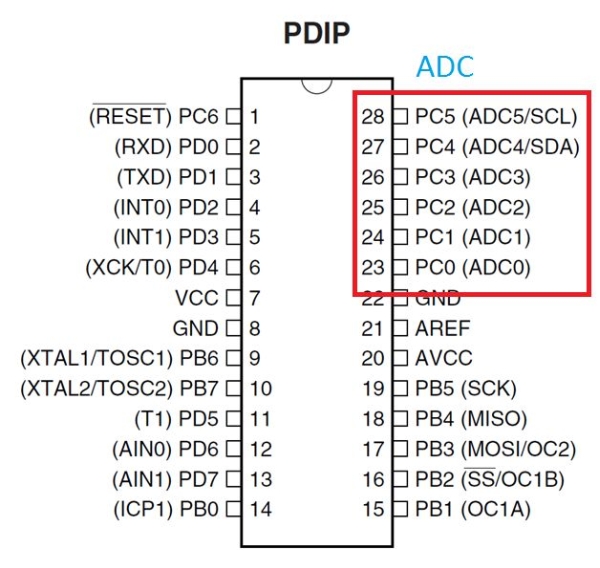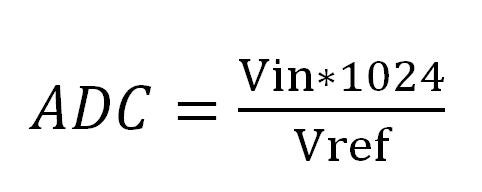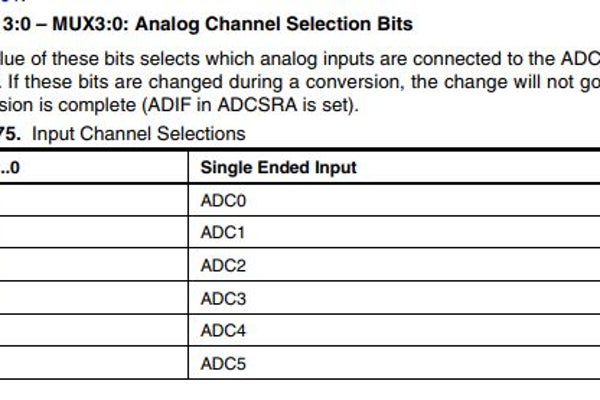Summary of Introduction to ADC in AVR Microcontroller | for Beginners
This tutorial explains the Analog to Digital Converter (ADC) functionality in AVR microcontrollers, specifically the ATmega8. It details how the ADC converts analog voltages into 10-bit digital values using internal channels and reference voltages, with minimal external components. The guide covers ADC operation modes, result adjustment (left/right), and important registers like ADMUX and ADCSRA for configuration, including enabling the ADC, starting conversion, interrupt handling, and setting prescalers to ensure proper ADC clock frequency.
Parts used in the ADC in AVR Microcontroller Project:
- ATmega8 Microcontroller
- Analog Sensors (e.g., temperature, light, distance sensors)
- External Voltage Reference (optional, connected to AREF pin)
- Power Supply (VCC and AVCC pins)

In thid tutorial you will know everything ADC in avr microcontroller
Step 1: What Is an ADC?
An ADC, or Analog to Digital Converter, allows one to convert an analog voltage to a digital value that can be used by a microcontroller. There are many sources of analog signals that one might like to measure. There are analog sensors available that measure temperature, light intensity, distance, position, and force, just to name a few.
Step 2: How Work ADC in AVR- Microcontroller
The AVR ADC allows the AVR microcontroller to convert analog voltages to digital values with few to no external parts. The ATmega8 features a 10-bit successive approximation ADC.ATmega8 has 7 channel ADC at PortC. The ADC has a separate analog supply voltage pin, AVCC. AVCC must not differ more than ± 0.3V from VCC.. The voltage reference may be externally decoupled at the AREF pin. AVCC is used as the voltage reference. The ADC can also be set to run continuously (the free-running mode) or to do only one conversion.
Step 3: ADC Conversion Formula

Where Vin is the voltage on the selected input pin and Vref the selected voltage reference
Step 4: How to Configure ADC in ATmega8?

The following Registers are used for implementation of ADC in ATmega8
ADC Multiplexer Selection
Step 5: ADLAR Selection

ADC Left Adjust Result The ADLAR bit affects the presentation of the ADC conversion result in the ADC Data Register. Write one to ADLAR to left adjust the result. Otherwise, the result is right adjusted
When an ADC conversion is complete, the result is found in ADCH and ADCL When ADCL is read, the ADC Data Register is not updated until ADCH is read. Consequently, if the result is left adjusted and no more than 8-bit precision is required, it is sufficient to read ADCH. Otherwise, ADCL must be read first, then ADCH. Analog Channel Selection Bits The value of these bits selects which analog inputs are connected to the ADC.
Step 6: ADCSRA Selection

• Bit 7 – ADEN: ADC Enable Writing this bit to one enables the ADC. By writing it to zero, the ADC is turned off
• Bit 6 – ADSC: ADC Start Conversion In Single Conversion mode, write this bit to one to start each conversion. In Free Running mode, write this bit to one to start the first conversion.
• Bit 5 – ADFR: ADC Free Running Select When this bit is set (one) the ADC operates in Free Running mode. In this mode, the ADC samples and updates the Data Registers continuously. Clearing this bit (zero) will Terminate Free Running mode.
• Bit 4 – ADIF: ADC Interrupt Flag This bit is set when an ADC conversion completes and the Data Registers are updated. The ADC Conversion Complete Interrupt is executed if the ADIE bit and the I-bit in SREG are set. ADIF is cleared by hardware when executing the corresponding interrupt Handling Vector. Alternatively, ADIF is cleared by writing a logical one to the flag.
• Bit 3 – ADIE: ADC Interrupt Enable When this bit is written to one and the I-bit in SREG is set, the ADC Conversion Complete Interrupt is activated.
• Bits 2:0 – ADPS2:0: ADC Prescaler Select Bits According to the datasheet, this prescalar needs to be set so that the ADC input frequency is between 50 KHz and 200 KHz. The ADC clock is derived from the system clock with help of ADPS2:0 These bits determine the division factor between the XTAL frequency and the input clock to the ADC.
Source: Introduction to ADC in AVR Microcontroller | for Beginners
